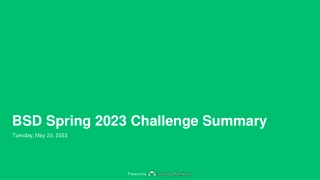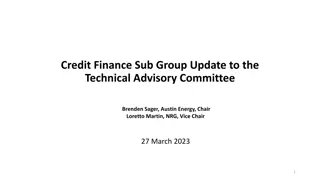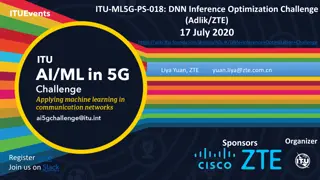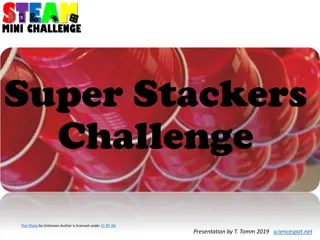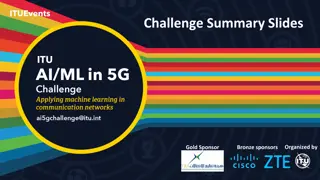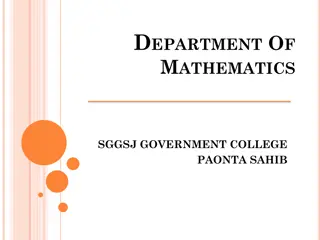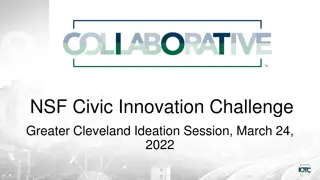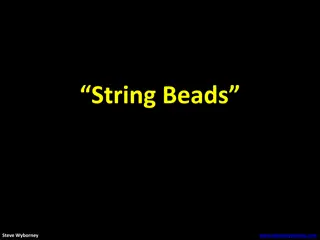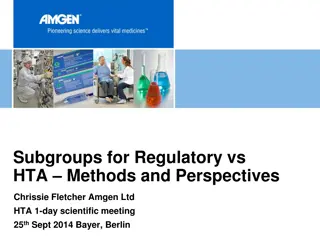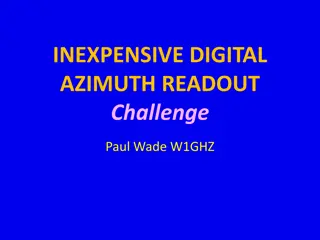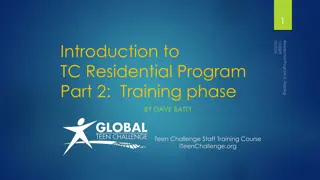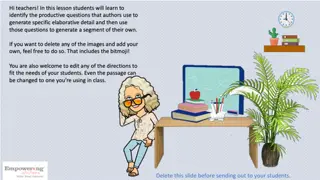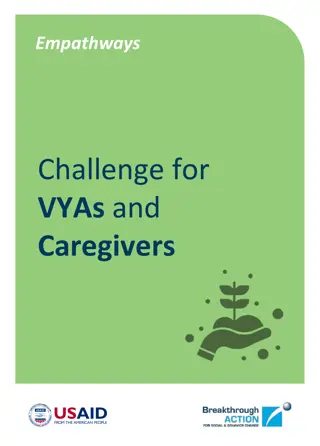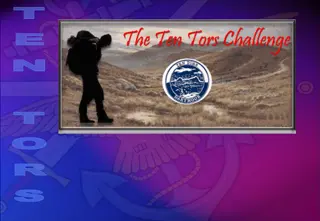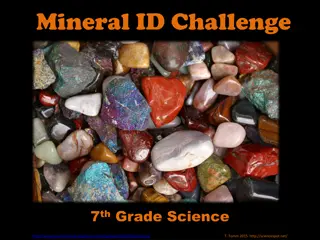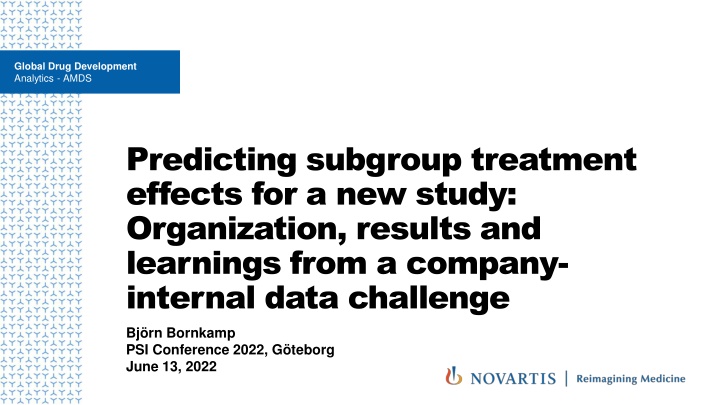
Predicting Subgroup Treatment Effects in Clinical Trials: Insights from a Data Challenge
Explore the challenges of identifying subgroups with enhanced treatment effects in clinical trials, presented at the PSI Conference. Discover the motivation behind the Subgroup Challenge, the setup of the project, participant tasks, and scoring criteria for evaluating treatment effect predictions.
Download Presentation

Please find below an Image/Link to download the presentation.
The content on the website is provided AS IS for your information and personal use only. It may not be sold, licensed, or shared on other websites without obtaining consent from the author. If you encounter any issues during the download, it is possible that the publisher has removed the file from their server.
You are allowed to download the files provided on this website for personal or commercial use, subject to the condition that they are used lawfully. All files are the property of their respective owners.
The content on the website is provided AS IS for your information and personal use only. It may not be sold, licensed, or shared on other websites without obtaining consent from the author.
E N D
Presentation Transcript
Global Drug Development Analytics - AMDS Predicting subgroup treatment effects for a new study: Organization, results and learnings from a company- internal data challenge Bj rn Bornkamp PSI Conference 2022, G teborg June 13, 2022
Organizing team & co-authors Carsten M ller Conor Moloney Giulia Capestro Jana Starkova Mark Baillie Michela Azzarito Ruvie Martin Silvia Zaoli 2
Motivation Finding subgroups is "the hardest problem there is" (Steve Ruberg) Clinical trials not designed for assessing subgroup trt effects (insufficient sample size) Subgroup identification even harder: Comparing trt effects (assessing interactions) Many have been in the situation of a study with borderline trial results... ... but: A subgroup with better treatment effect has been identified Shall we run the next trial in the subgroup? What are the chances of success? Idea of Subgroup Challenge Mimick this situation: Participants derive a subgroup based on a pool of studies and predict its efficacy for a true new trial : Trial just read out; results not yet published; study data still embargoed 3
Challenge Setup: Project Training dataset Scoring dataset 4 Phase III randomized clinical trials (~2200 patients) in the compound & disease were provided to all participants on data science platform One new Ph III trial (~400 patients), not available to participants (still restricted on regulatory data platform) Same inclusion criteria Same 90+ baseline covariates Same primary outcome (binary) 4
Challenge task Participants work on 4 studies and had to submit: A definition of the subgroup for which they predict increased treatment effect in the new trial (ex. AGE<60 ) Their prediction of the treatment effect to be observed for the subgroup in the new trial: ????? = p(treatment) p(control) and its uncertainty ????? in the prediction Their git repository and a description of their methodology, with clinical/biological justification of the subgroup. 5
Scoring Does the subgroup have increase treatment effect in the new trial? Is the prediction of treatment effect accurate? ? = treatment effect observed in the subgroup in the new trial The score is the log-likelihood of ? according to N(?????, ?????) Probability pi of patient i to respond modeled as ? ????? (??) = ?0+ ??????+ ????+ ????????????????+ ?? - ??= treatment (0 control, 1 treatment) - ?? = subgroup (1 subgroup, 0 complement) - ?? covariates as in the primary analysis model for the new trial Density ???????????? ?.?.( ????????????) Score obtained as: ? ????? Treatment difference in subgroup 6
Scoring good data science practice 1) Science and methodology Teams submit description (< 300 words) of subgroup derivation (methodological approach) and clinical justification for chosen subgroup Blinded review by senior clinical and statistical management 2) Documentation, reproducibility and knowledge transfer Team s git repository will be scored (code & workflow well documented) Review by organizing committee 7
Technical/logistical conduct Participants work in git repository on data science platform In this repository a template Rmd file (with fixed format requirements) needed to be populated with predictions and subgroup justification Repos were automatically read and predictions evaluated Member of organizing team had access to restricted folder of the new Phase III trial to score solutions 8
Participants Participants 30 teams ~100 team members Most teams from Biostatistics group Other teams from Business Analytics, Data Science group, Real World Evidence Group, ... 26 teams submitted a subgroup definition 24 complete submissions Participants 40 30 20 10 0 9
Challenge Timelines TEST SUBMISSION FINAL SUBMISSION CHALLENGE WINNER KICK OFF TEST SUBMISSION Day 37 Day 1 Day 34 Day 42 Day 52 10
Similarity of submitted subgroups MDS based on Jaccard distance Plotting first two MD dimensions Proposed subgroups quite different also among top 3 12
Treatment effect on risk difference Treatment effect on risk difference scale scale: Overall & teams : Overall & teams All but two teams achieved a treatment effect better than the overall with their subgroup 13
Interaction test statistics (score 1) Interaction test statistics (score 1) Interaction on log-odds scale: harder to optimize Surprising difference between risk-difference (previous slide) and odds-ratio scale different But still similar trends for teams rank order 14
Quality of predictions (score 2) Quality of predictions (score 2) Plot of difference delta_predicted - delta_observed Overestimation of treatment effect for most teams 95% prediction intervals cover observed value for most teams 15
Subgroup selection on patient level Subgroup selection on patient level How many teams selected each patient to be part of their subgroup? Examples 3 patients were selected by no team to be part of their subgroup 1 patient was selected by 23 teams 33 patients were part of 5 teams subgroups 16
Super Super- -responder (or lousy responder (or lousy- -responder) subgroups based on team subgroups based on team- -votes responder) votes Overall 17
Methods conclusions Methods conclusions Methods used by top 5 teams Model-based partitioning (MOB) LASSO on subgroup variables (pre-defined splits based on quantiles) Dose-response modelling with Bayesian shrinkage priors for variable selection Thresholding of identified variables Subgroup discovery based machine learning method (pysubgroup) Super-Learner + LASSO for var-selection Thresholding of identified variables No clear conclusions on subgroup workflow or specific methods performing better or worse subgroup identification usually a mix of methods hard to categorize tree/forest-based versus regression; bias-adjustment; model assessment 18
Conclusions: Subgroup Identification Conclusions: Subgroup Identification "The hardest problem there is" (Steve Ruberg) 26 teams: access to the same data & information & worked on same task quite different subgroups submitted across different teams Most teams succeeded in finding subgroups with (moderately) increased treatment effect on new study Magnitude smaller than expected on previous studies (regression to the mean) 19
Feedback on Subgroup Challenge Feedback on Subgroup Challenge Feedback from participants was positive A different way of training subgroup identification new software tools: onboarding on data science platform, Rmarkdown, git Sense of community around the globe & collaboration From feedback survey Do you think we should organize further data challenges in the future? Answers: 100% yes 20
Thank you Thank you
Logit scale Logit scale On logit scale better to minimize control outcome in subgroup, than optimize maximize treatment outcome in subgroup Effect dampened by division through standard error (standard error of small proportions larger on logit scale)

